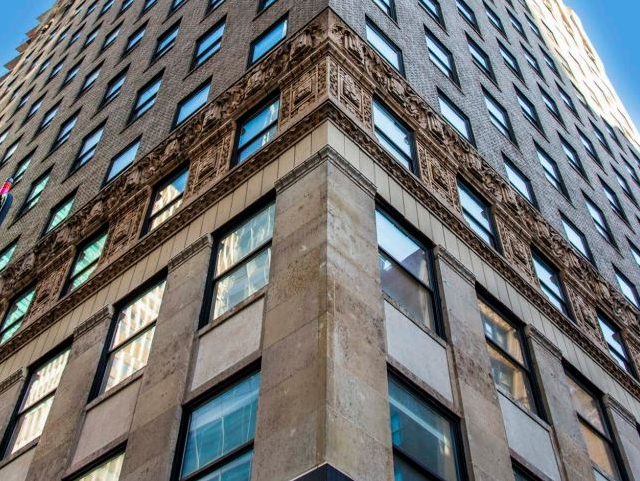How Persistent Will Inflation Be?
Peter Muoio of SitusAMC on how the Federal Reserve's aggressive rate tightening could impact CRE.
The consumer price index for March 2022 rose 8.5 percent from the prior year, the highest annual reading for inflation since 1981. It also marks one year since the CPI began measuring above 2 percent annually—the Federal Reserve’s long-held ideal rate. Over the past year, inflation has supplanted every other risk as the primary concern facing investors, according to a quarterly survey conducted by SitusAMC Insights.
Persistent demand, supercharged by significantly higher federal spending in response to the COVID-19 pandemic, coincided with disrupted supply chains to supercharge price increases. An exceptionally tight labor market in the aftermath of the pandemic, the war in Ukraine and COVID-19 lockdowns in China have exacerbated the problem. The questions are how much longer inflation will remain extremely elevated and how commercial real estate properties will perform in an inflationary environment.
One key to inflation’s staying power is whether inflation expectations will permanently shift upward. Data from the financial markets, and the public and prominent economists offer an idea for the inflation road ahead. The difference between U.S. Treasury bond yields and Treasury inflation-protected securities is the breakeven rate and represents the market’s expectation of future CPI inflation. As of this writing, the five-year breakeven rate is around 3.3 percent and the 10-year rate is around 2.8 percent, both at record highs, meaning bond traders see inflation running around 3 percent in the medium to long term.
Public opinion on future price increases often helps drive changes in inflation. Data collected by the New York Federal Reserve points to public expectations for inflation over the next few years. Survey respondents believe that inflation would reach 6.6 percent a year from now, a record high for the metric, before declining to 3.7 percent in March 2025.
Inflation Expectations
The Wall Street Journal conducts surveys of prominent academic, business and financial economists about their economic expectations. With the caveat that forecasting macro trends is difficult, this group expects inflation, on average, to decline to a still-high 7.5 percent this summer, before diminishing to 3.4 percent in summer 2023 and 2.5 percent by summer 2024.
All these metrics indicate that inflation will remain high in the very near term, but we may be nearing the point of inflection. This supports a recent statement issued by Federal Reserve Board Governor Christopher Waller that said we might be at the peak of inflation. Near-term inflation rates, though declining, would still be higher than the average rate of the past 40 years—2.8 percent.
Inflation can be a double-edged sword for CRE investors. Rising energy, labor and maintenance costs eat into net operating income. However, soaring construction costs and supply chain issues are keeping new supply in check. SitusAMC’s analysis finds a moderate positive correlation between core CPI and overall CRE returns over the past 44 years. Higher inflation is generally associated with somewhat stronger returns. The inflation buffer mostly comes from the income return as landlords are able to increase rents. Rising property values also provide a modest hedge.
The relationship varies by property type, with apartments faring the best during times of elevated inflation. Apartments provide the best protection from inflation because of short-term leases. Apartment owners are also not exposed to tenant costs for energy, limiting cost-side impairment. Retail, industrial and office have longer-term leases, providing less NOI inflation hedging, but triple-net leases allow landlords to pass on expenses to tenants.
SitusAMC finds that the CRE hedge is particularly strong amid high inflation due to the resiliency of capital appreciation. During times of rising inflation, the income component of returns is particularly strong.
Should inflation start to decelerate, as many forecast, the impact on CRE should be minimal, if at all. During times of declining inflation, the correlation between CRE total returns and inflation is near zero. In general, office returns hold up the best to falling inflation, followed by industrial and apartment. A decrease in inflation is most troublesome for income returns across all property types.
Though concerns about inflation are warranted, perhaps a more pertinent issue is whether the surge in inflation and the Fed’s response could lead to a recession. Every major spike in inflation over the past 75 years has been followed by recession. Markets are also flashing warning signs as the yield curve has been flirting with inversion, which nearly always signals a recession ahead. The 10-year Treasury minus the two-year Treasury briefly turned negative in early April. This has historically been a reliable indicator of near-term recession. During the 1980s, the central bank had to induce a recession to control runaway inflation. Though the Fed is aiming for a “soft landing,” many economists are pessimistic. Real interest rates remain negative, suggesting the Fed will need to be aggressive in raising rates to control inflation. Economists put the probability of the economy being in a recession within the next year at 28 percent, up from 18 percent at the beginning of the year.
That which is bad for the economy is typically bad for CRE. Commercial property performance is closely linked to GDP; a flailing economy means a pullback in business and consumer spending, limiting the ability of landlords to raise rents. A more aggressive monetary policy will likely raise long-term interest rates, compressing CRE cap rate spreads over the 10-year Treasury and resulting in a pullback of CRE investment. Our analysis suggests that the office and retail segments would be particularly vulnerable to recession, though the industrial segment would also see a significant cooldown from its current red-hot state. A recession sparked by policy response to inflation, not inflation, represents the real risk to CRE.
Peter Muoio, PhD, serves as head of SitusAMC Insights.








You must be logged in to post a comment.